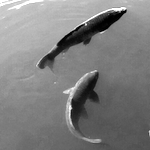The deep sea is the largest habitable ecosystem on the planet and remains one of the least explored; very little is known about deep sea inhabitants, their behavior, and the limits and drivers for their survival. Ecomechanics, the multidisciplinary research field of the mechanisms that underlie organismal interactions and survival within their environment, has proven largely successful in terrestrial fields and lab-based organismal systems, but has had limited applicability to deep sea animals. The reason for this deficit is largely due to the technological challenges to access this environment for study, and the typically short duration of any observations, precluding documentation of many critical behaviors. Furthermore, instrumentation that can enable measurements of complex fluid and animal movement and behavior at the required spatiotemporal scales is extremely limited. To partially address these needs, we have developed two new in situ imaging systems, deployed using remotely operated vehicles (ROVs). DeepPIV (Particle Imaging Velocimetry) projects a laser sheet perpendicular to a camera's view axis, allowing visualization of fluid flow around and inside organisms, as well as 3D reconstructions of semi-transparent animals. EyeRIS (Remote Imaging System) is a single-camera lightfield imaging system that provides real-time, time-resolved 3D particle and surface visualizations at similar spatial scales. Both instruments operate at spatial scales of millimeters to ~30 centimeters, relevant for studying the biomechanics of many midwater and benthic species, and can be used to validate computational models inspecting fluid-structure interactions of natural phenomena. Here we describe the first at-sea deployments of these systems in the Monterey Bay National Marine Sanctuary, and share how the dynamics of feeding and swimming animals (e.g., squid, ctenophores, sea stars, coral) in the deep sea can be effectively studied and inform coupled problems in science and engineering.

 PDF version
PDF version
